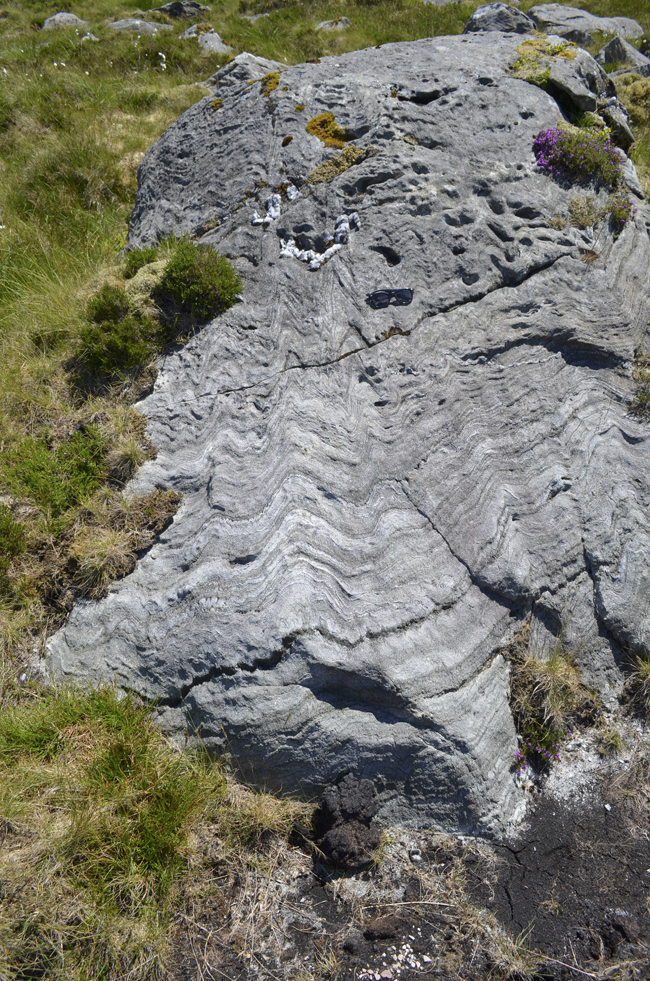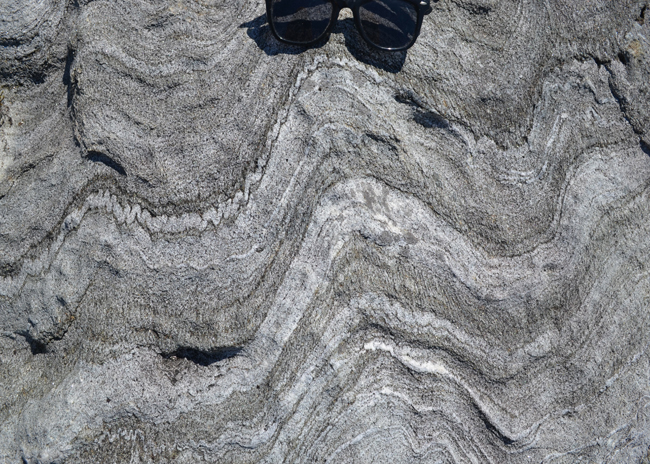My former student Aaron Barth sent me a few photos of disharmonic folding in metamorphic rocks in Ireland for a guest Friday fold….



Awesome! Thanks Aaron!
My former student Aaron Barth sent me a few photos of disharmonic folding in metamorphic rocks in Ireland for a guest Friday fold….



Awesome! Thanks Aaron!
These folds are intriguing. Could you give us some information on how they might have been formed? I don’t think you’ve explained disharmonic folding before in your blog, other than the lasagne incident–and somehow I doubt the same forces caused these folds…(grin).
I’ll ask Aaron to consult his field notes and enlighten us as to the regional geology of the site.
In general, disharmonic folding like this (axial traces of folds in one layer cannot be traced into next across-strike layer) results when you have buckle folding of several layers of either different lithologies or different thicknesses. I’d point the finger at thickness being the controlling variable here.
-C.
These rocks are part of the Dalradian Group that were deposited in “a marine environment of current-swept sandy shoals” that we’re subsequently deformed during the Grampian Orogeny which is the British Isles equivalent of the Acadian.
This field site is on the southwestern edge on the Ballycroy National Park in County Mayo. Here is a link to the park that has a little more information if you would like it:
http://www.ballycroynationalpark.ie/geology.html
Hope that helps.
Interesting folds. At the largest scale, they appear to be a combination of parallel and chevron kink folds. It’s a complex volume balancing act. Notice that in areas where the folds are tightest, the rock layers adjacent have low-amplitude distortions.
In the closer views, one can see how the brighter and more ductile layers fold into shorter wavelength folds, whereas, the darker layers have a well-develloped cleavage/foliation fabric that is axial planar.
Overall, the combination of volume loss via cleavage formation and brittle dislocation along the cleavage / foliation fabric compensates and fills the spaces formed by the more ductile layers.